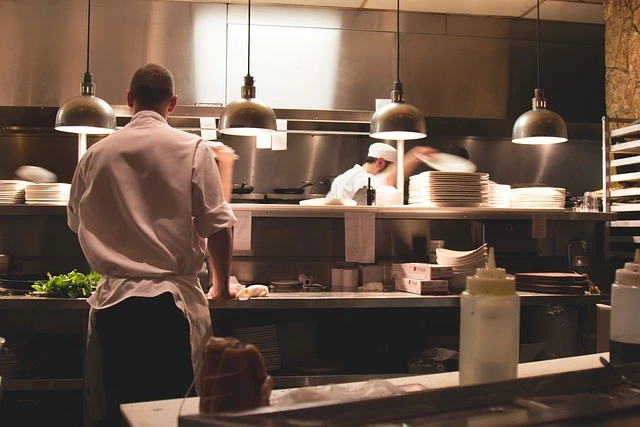Optimizing Tax Benefits for Your Virtual Restaurant Business: Food Delivery Revenues and Kitchen Equipment Costs
Ghost kitchens or virtual or cloud kitchens have become popular in the food industry since they are not open to the public and offer only delivery and takeout services. As a ghost kitchen operator, tax planning and management are pivotal in determining the company’s profitability. In this guide, we explain ways to address the tax issues related to collecting food delivery revenues and expenses tied to kitchen equipment.
1. Analyzing the Concept of Operations and Roadmap for the Ghost Kitchen
A. Definition:
Ghost Kitchens: Food preparation facilities that are principally dedicated to providing delivery and takeaway services, sometimes accommodating several different restaurants.
B. Revenue Streams:
Food Delivery Platforms: Sales made either directly or through third-party apps meant for the delivery of food which are available in the market in the form of UberEats, DoorDash, and Grubhub among others.
Direct Orders: Sale that you make from direct customer orders from your online platform such as your website or app.
C. Cost Structure:
Kitchen Equipment: Equipment and utensils, especially those that are best suited for commercial use in operating a restaurant or a café.
Operational Costs: Any costs associated with the rental of the premises, lighting, buying raw materials for the food and beverage, and wages paid to employees.
2. Tax Management Strategies for Receivables Derived from Food Delivery
A. Tracking and Reporting Income:
Accurate Records: Keep records of all revenues from third-party delivery platforms and any direct customer orders.
1099-K Forms: Make sure you receive and go through Form 1099-K from delivery platforms that would indicate your transaction sum.
B. Sales Tax Compliance:
State Requirements: Know and adhere to state-based rules concerning the selling of food and drinks through delivery services.
Local Taxes: Make sure you are up to date on any other local taxes that may apply to foods being sold.
C. Revenue Recognition:
Consistent Accounting Methods: Account for revenue using the techniques of the used accounting method (cash or accrual).
Advance Payments: Record payments in advance or deposits that may have been received for bulk sales or events such as catering jobs.
3. Optimizing the Allowance for the Equipment Use in Kitchen
A. Capitalizing vs. Expensing:
Capital Expenses: Regarding the major equipment used in a kitchen, it should be capitalized and on the other hand, depreciated based on its useful life.
Section 179 Deduction: It may be beneficial to calculate and utilize Section 179 to deduct up to $1,080,000 (as of 2023, filed in 2024) in the first year of the equipment operation.
B. Bonus Depreciation:
100% Bonus Depreciation: Again, you can use 100% bonus depreciation, where businesses can deduct the full cost of furniture and equipment used in the operation of the business in the first year of purchase, especially in the purchase of new and used kitchen equipment.
C. Repairs and Maintenance:
Immediate Deduction: Expense costs belonging to repairs and maintenance of the kitchen equipment as and when they are incurred.
4. Other Tax Strategies for ghost kitchen operators
A. Labor Costs:
Wage Deductions: Subtract the wages that were paid to employees which are the chefs, kitchen staff, and administrative employees.
Payroll Tax Credits: Learn about Payroll Tax Credits including the Work Opportunity Tax Credit (WOTC) as an incentive to target specific groups for hiring.
B. Rent and Utilities:
Lease Payments: Subtract all costs associated with rent for the premises occupied by the ghost kitchen.
Utilities: Subtract utilities like power, water, and cooking gas costs for those who prepare food in advance.
C. Marketing and Advertising:
Advertising Expenses: Claim expenses regarding the promotion and advertisement of your virtual kitchen, including paid ads and campaigns, and promotions on delivery apps.
D. Food and Ingredients:
Cost of Goods Sold (COGS): Subtract expenses related to food, such as ingredients and supplies used throughout the meal preparation process.
E. Software and Technology:
Tech Expenses: You should deduct operating costs associated with software technology involved in order management systems, delivery tracking mechanisms, and customer support.
5. Planning and Professional Opinion
A. Hire a Tax Professional:
Expert Guidance: Consult with a tax professional who understands all the laws and regulations specific to the food and hospitality business for better deduction. Also, consider utilizing marketplaces like IfindTaxPro, you can post your project and find the right professional for your needs.
B. Stay Updated:
Tax Law Changes: It is also crucial to update oneself with the changes in tax laws that could impact your business, in this case, the ones that will affect the food and delivery sector.
C. Regular Reviews:
Periodic Check-Ins: Consult your tax advisor often to be well acquainted with overall governmental tax benefits as well as the common set of rules.
Specific counseling on tax management can help contribute greatly to the success of your ghost kitchen. Knowing how to handle the revenues from food delivery services and how to get more deductions towards the cost of kitchen equipment will help you reduce your taxes. It is therefore advisable to consult a tax consultant and keep abreast with changes in tax laws will assist in overcoming tax challenges when running the virtual restaurant business.








